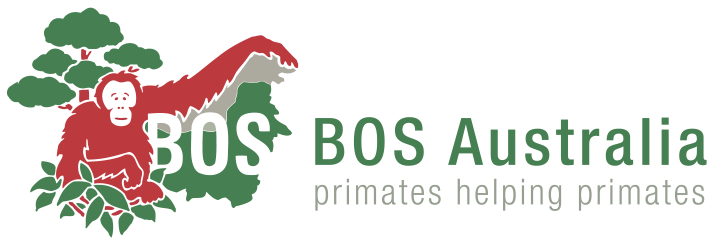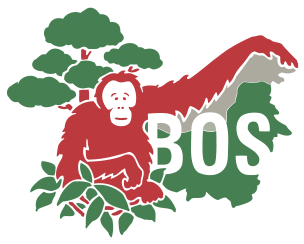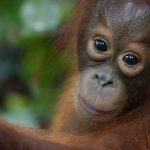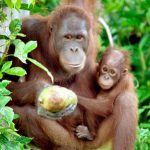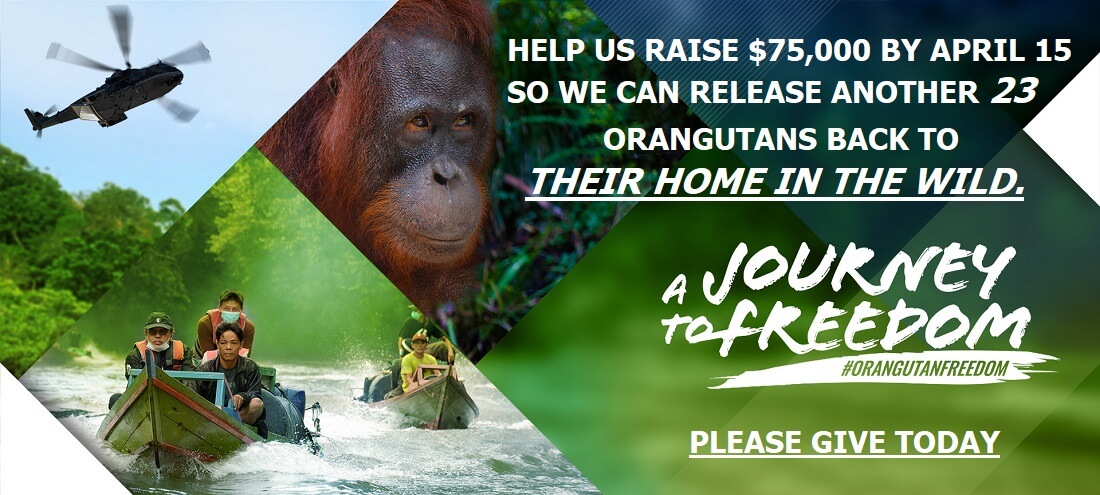FIVE TO FREEDOM

In our first release of 2023, the BOS Foundation team recently returned five orangutans to their wild home.
It is one of those moments that still give us goosebumps: The second when one of our rehabilitated orangutans steps out of their transport cage into freedom. We can only imagine what it feels like to be finally home after being stolen from your mother, illegally kept as a pet and spending years learning and practising how to survive in the forest.
Elaine (13), Leann (13) and Riana (10), Andreas (11) and Mayer (10) were all significantly traumatised when they arrived at BOS Foundation’s Samboja Lestari Centre. Riana, for example, had been chained around her neck to a tree in an unshaded yard. The rescue team had to cut the chain from her neck, which was scarred from years of being held captive in that manner.
Now Riana and her four peers can roam freely and independently in BOS Foundation’s 86,593.65-hectare Ecosystem Restoration Concession area within the Kehje Sewen Forest in East Kalimantan. The trip by trucks, boats and on foot to the remote release site was no easy feat. Over muddy roads, through wild waters, up and down steep terrain – the release team faced many challenges, but their dedication and tireless effort pulled them through.
- Over fragile bridges…
- …through rough waters…
- …and on muddy trails.
A long journey to two release points
After a 20-hour journey from Samboja Lestari Rehabilitation Centre to the south side of Kehje Sewen Forest, the team successfully opened the five orangutan transport cages at two different points. They released Mayer and Elaine at the first location, while Andreas, Leann, and Riana took their first steps into freedom at the second release point.
The team members opened Mayer’s cage first, and he aggressively displayed towards them. This behaviour is not uncommon as each orangutan copes with the long and stressful journey in their own way. Once he settled down, all he wanted to do was eat the remains of the food provisioned by the journey before finding a tree where he could feed on wild fruit and leaves.
Elaine’s reaction to the transport cage opening was completely different. She immediately started exploring her new environment, climbing into nearby vegetation. Her first stop in the Kehje Sewen forest was the comfortable branches of a rasamala tree (Altingia excelsa).
Love at first sight
After the team opened Andreas’s transport cage at the next release point, the active male immediately climbed the tree in front of him and made a nest. However, his rest came to an end the moment Leann’s stepped into freedom. Andreas greeted his new neighbour and made his interest in her well-known, ending with the new pair copulating. We could not be more proud of Andreas and Leann. They are already making themselves at home and trying to naturally grow the number of orangutans in Kehje Sewen.
Lastly, the team opened Riana’s cage. She emerged and did not take immediate action. Instead, she took in her new surroundings before moving closer to Andreas and Leann. On their first day in the forest, the trio stayed within a few metres of one another. As the sun set, Riana got to work, making a nest for herself to sleep peacefully that evening.
We sincerely hope these rehabilitated orangutans can adjust well to their new home, the Kehje Sewen Forest. However, it should be fine as the meaning of Kehje Sewen in the local Wehea Dayak language is ‘Home of Orangutans’. With the arrival of the three females and two males, the reintroduced orangutan population of Kehje Sewen rises to 126 individuals. And with this increase, the potential for new babies grows.
First release after a two-year break
The release of the five orangutans was the first from Samboja Lestari after an almost two-year gap. This break was due to restrictions mitigating COVID-19 risk and the availability of orangutans ready to be released. “By remaining fully committed to efforts to save orangutans, we took advantage of this gap to prepare orangutan candidates”, says BOS Foundation CEO Dr Jamartin Sihite.
He emphasises that the task and responsibility for protecting and preserving orangutans is a joint effort that requires all parties and stakeholders to work together. “Because we all reap the benefits of healthy forest ecosystems. For these to thrive, they need the presence of orangutans, and, in return, they provide us with fresh air, clean water, and a regulated climate.”
